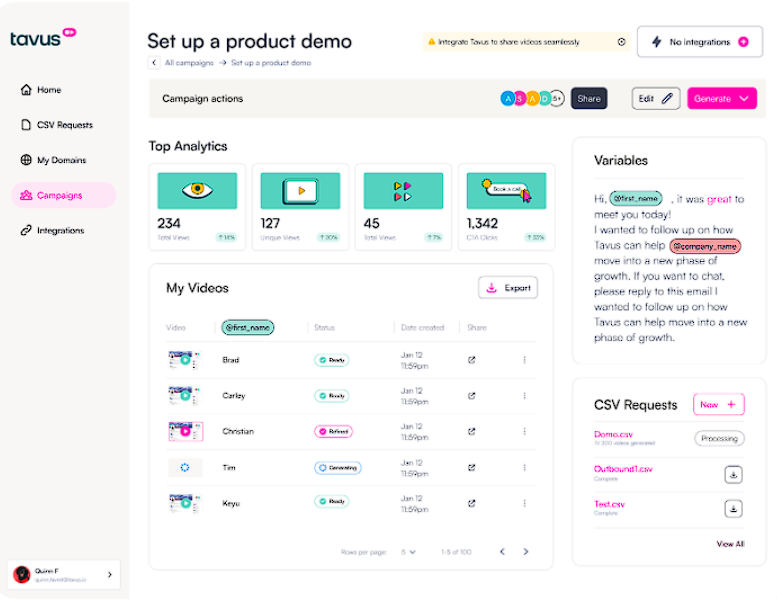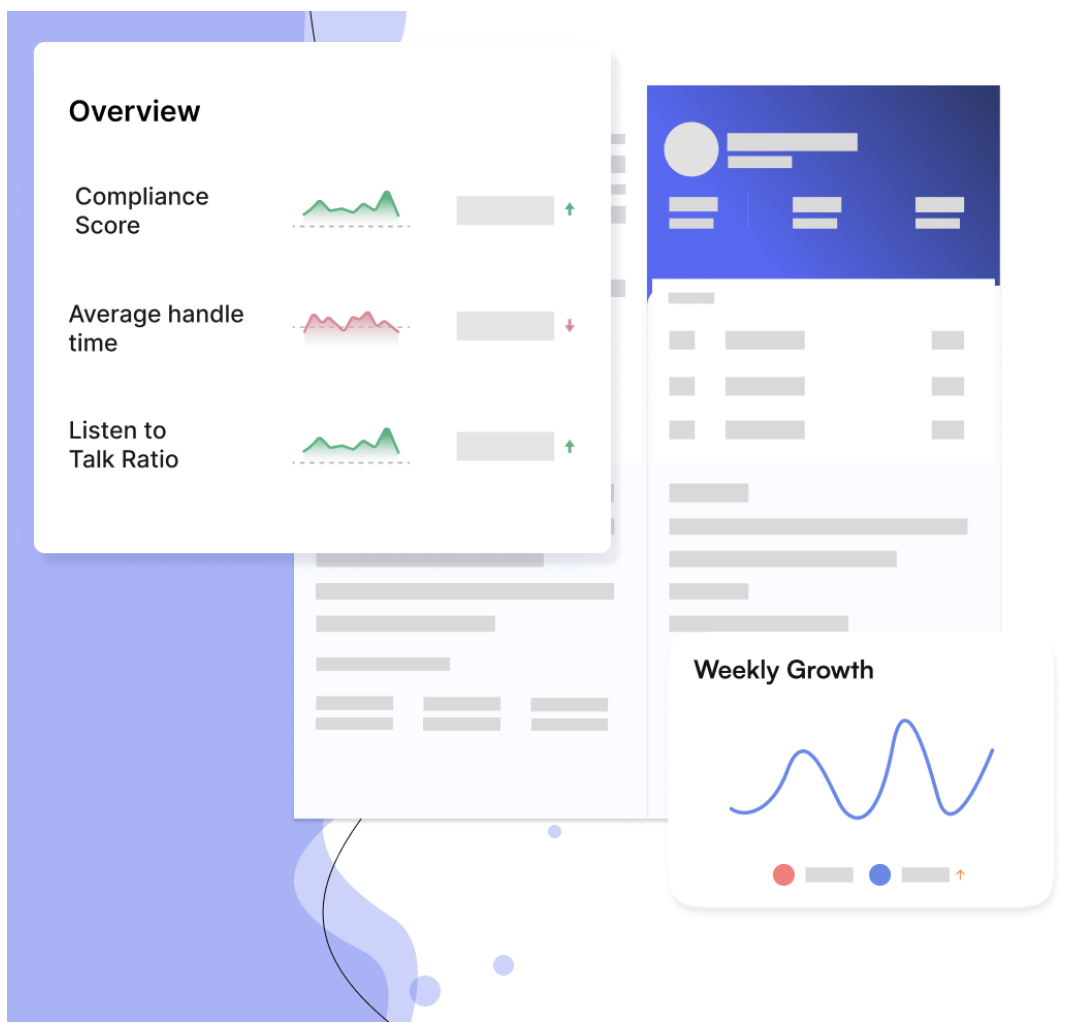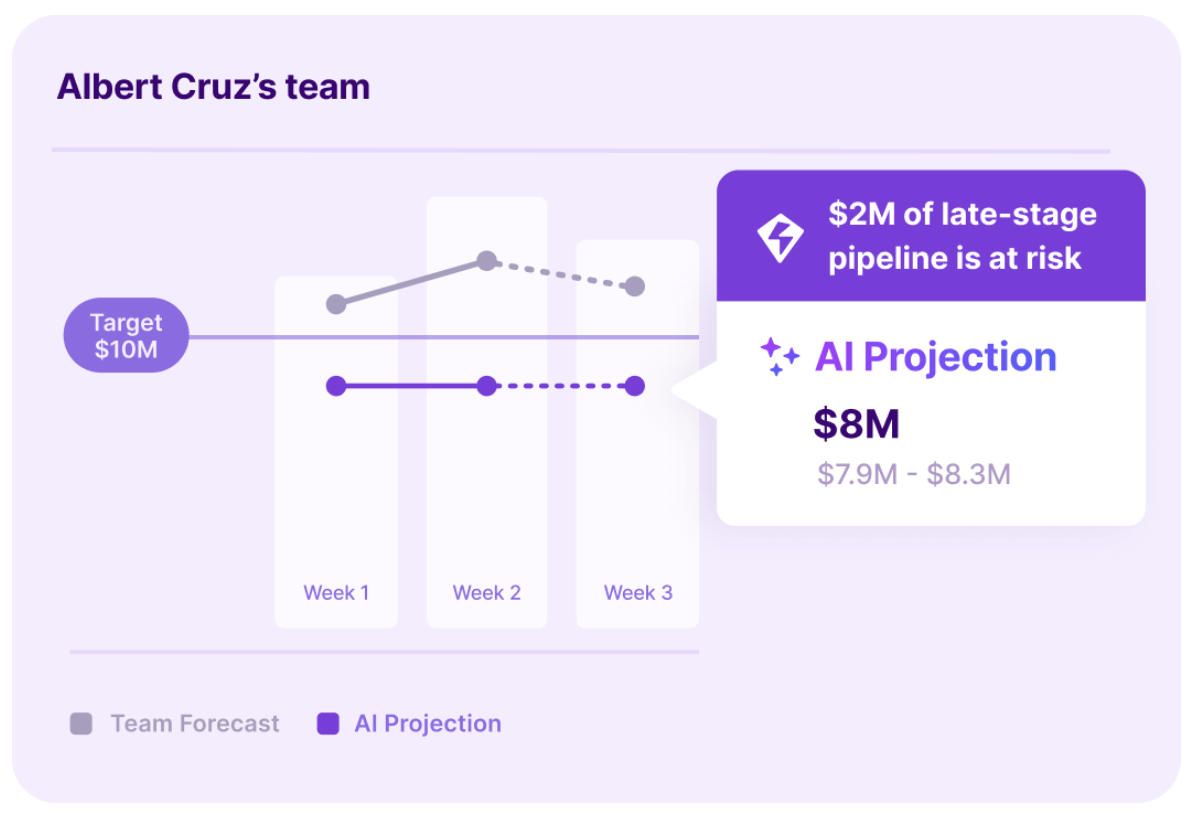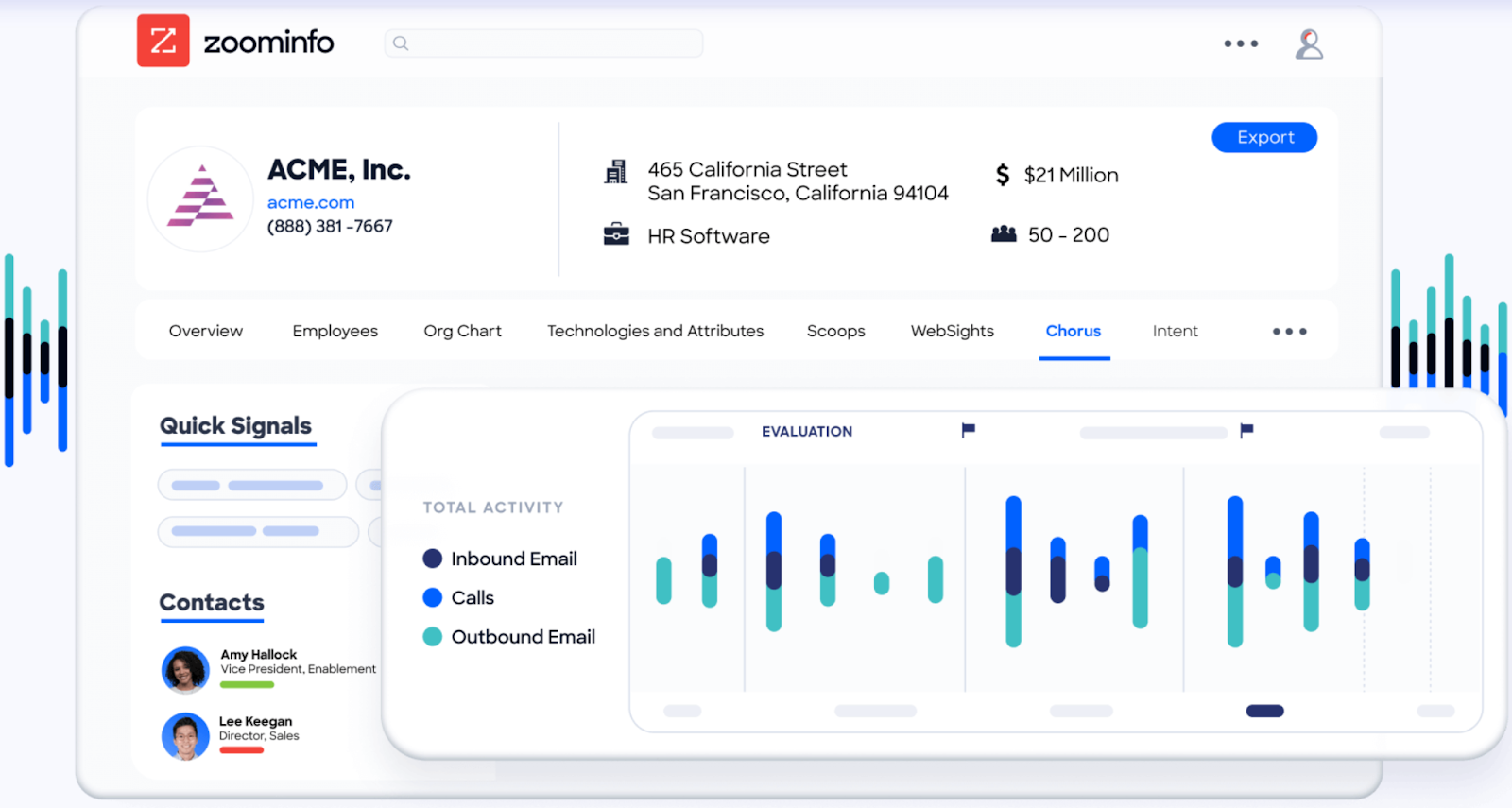All Posts
Conversational Intelligence: A Complete Guide & Best APIs | 2025


Key Takeaways:
Customer conversations hold valuable data most companies never see. Modern conversational AI platforms now extract and analyze every word, tone, and pattern from these exchanges, giving businesses clear insights into what their customers actually want and need.
Natural language processing (NLP) applications have evolved far beyond basic chatbots. The latest conversational intelligence systems process vast amounts of interactions in real-time, uncovering sentiment shifts, recurring challenges, and key behavioral signals that might otherwise go unnoticed. These insights empower teams across marketing, product development, operations, and more—helping businesses refine messaging, enhance user experiences, and drive smarter decision-making.
Ready to learn exactly how conversational intelligence works? In this article we’ll break down the core components, explore real-world applications across industries, and help you navigate the best APIs to integrate into your tech stack.
Conversational intelligence combines machine learning (ML) and NLP to decode the meaning behind every user interaction. Whether through speech or text, advanced AI analyzes word choice, tone, and context to uncover patterns in communication and intent.
The process begins with raw conversation data from calls, chats, emails, and other digital interactions. Sophisticated algorithms then identify trends in language, sentiment, and behavior. Product teams gain insights into user needs and pain points. Operations can detect inefficiencies and streamline workflows. HR and training departments assess communication effectiveness, while compliance teams monitor for regulatory risks. Every part of an organization benefits from a deeper understanding of previously overlooked conversations.
Tavus offers a leading real-time Conversational Video Interface (CVI) that lets you build face-to-face AI humans that see, hear, and respond naturally. Powered by Phoenix‑3 (full‑face rendering), Raven‑0 (perception), and Sparrow‑0 (turn‑taking), CVI delivers sub‑second interactions that feel human and fluid.
Learn how you can integrate Tavus’ Conversational Video Interface (CVI) today.
Smart speakers, chatbots, and voice assistants have trained people to expect instant, personalized responses. Modern conversational AI solutions now decode the exact meaning behind every customer message, transforming basic exchanges into rich data about preferences, pain points, and more. Companies spot trends in seconds rather than weeks.
The impact extends far beyond customer interactions. Support teams resolve issues 40% faster by accessing AI-driven insights into common problems. Product teams refine features based on real-time user feedback. HR and training departments improve internal communication by analyzing team interactions. Compliance teams detect potential risks early by monitoring language patterns in conversations.
Most importantly, people—both customers or employees—receive more relevant, responsive interactions, whether through automation or enhanced human engagement. The results? Greater efficiency, improved experiences, and organizations that adapt in real time to evolving needs.
Conversational intelligence operates through two distinct processes: Input Analysis and Response Generation. Each serves a specific purpose in decoding human communication patterns.
Input Analysis transforms voice calls, chat messages, and emails into structured data points. NLP models scan every word choice, tone variation, and speech pattern to extract precise meaning.
Response Generation then converts analyzed data into immediate actions. ML algorithms compare incoming conversations against millions of previous interactions to predict optimal responses. A sales rep might receive a prompt showing proven objection handles, while support agents receive relevant knowledge base articles as customers describe problems. The entire process happens in milliseconds, giving teams real-time conversation insights without disrupting natural dialogue flow.
Here’s how Tavus’ CVI helps create realistic interactions:
Implement conversational intelligence today with Tavus.
Let’s review some of the amazing benefits of conversational intelligence technology.
Support teams reduce the time needed to resolve customer issues by up to 70% when conversation patterns reveal common pain points. Real-time sentiment analysis alerts agents to escalating situations before customers become frustrated, and shorter resolution wait times increase customer satisfaction. In fact, AI-driven self-service solutions have improved customer satisfaction scores by 92%.
Conversational intelligence platforms streamline operations by ensuring that every inquiry reaches the right destination instantly. Smart routing algorithms analyze the content and intent of a message in real-time, directing it to the most qualified specialist or department without unnecessary detours. This precision eliminates the inefficiencies of manual call transfers and email forwarding, reducing wait times and improving response accuracy.
With these intelligent systems in place, support teams can handle significantly more inquiries without expanding headcount, while customers benefit from faster resolutions and expert-driven assistance. The result is a more agile, efficient organization that optimizes resources and enhances overall service quality.
Conversation analytics provide deep insights into customer interactions, revealing patterns that impact product development, operations, and overall strategy. Organizations can quickly identify recurring pain points, uncover features that resonate most with users, and detect trends that may signal dissatisfaction or churn.
Product teams gain real-time visibility into usability challenges, allowing them to make improvements faster. Operational leaders optimize resources by aligning staffing with peak contact times and common inquiry types. Customer experience teams refine processes based on actual user feedback, ensuring more seamless interactions. With clear, data-driven insights, businesses can make informed decisions that enhance efficiency, satisfaction, and long-term success.
Conversations contain goldmines of customer insights waiting to be decoded. Here's exactly how different industries extract and apply conversation data:
Whether your end users work in sales and marketing, real estate, or customer service, Tavus will help you get them the tech they need to scale their business. Tavus users have generated conversational AI humans for ecommerce, life coaching, college tutoring, corporate training, and much more, all without coding experience.
The right conversational intelligence API can mean the difference between surface-level chat analytics and deep, actionable customer insights. Let's examine five leading APIs transforming how businesses process and learn from customer conversations.

Tavus stands out for real-time, face-to-face conversation and precise video personalization. The CVI API lets developers create conversational, real-time AI human interactions through its conversational video interface (CVI). With sub‑second latency and purpose-built models—Phoenix‑3 for full‑face rendering, Raven‑0 for perception, and Sparrow‑0 for turn‑taking—conversations feel immediate and lifelike. Tavus also provides a developer-first platform that’s easy to implement and scale.

Features:
Pricing:
Implement conversational intelligence into your platform with Tavus.

Enthu.AI specializes in sales call monitoring and quality assurance with conversational intelligence. The platform sources customer conversations across phone calls, chats, tickets, and other channels. Users can run the automated Quality Management program to monitor conversations and spot opportunities for agent and compliance improvement.

Features:
Pros:
Cons:
[All pros and cons are sourced from G2 customer reviews.]
Pricing: Pricing is not publicly available on Enthu.ai’s site.

Jiminny uses conversational intelligence to record and analyze all customer interactions, allowing companies to extract insights. The platform integrates with existing tools and platforms and offers meeting summaries, call scoring, and more.

Features:
Pros:
Cons:
[All pros and cons are sourced from G2 customer reviews.]
Pricing: Pricing is not publicly available on the site.

Gong is a revenue intelligence platform built for sales teams. It uses customer interaction data and Gong’s sales AI model to gain an understanding of sales conversations and provide insights for sales reps and business owners alike.

Features:
Pros:
Cons:
[All pros and cons are sourced from G2 customer reviews.]
Pricing: Custom pricing

Chorus by ZoomInfo is a conversational intelligence platform made to help performance-driven sales teams capture and analyze customer calls, emails, and meetings. The platform helps teams gain insights into their processes and customer behavior.

Features:
Pros:
Cons:
Pricing: Custom pricing
Let's examine the most common conversational intelligence questions to help you make informed decisions about adding conversation analysis to your stack.
Several platforms offer zero-cost entry points with core features like basic transcription and intent detection. Free tiers typically offer analysis on limited calls. While perfect for proof-of-concept testing, scaling beyond these limits requires paid upgrades to access features like real-time analysis or multi-language support.
Tavus’ free plan includes monthly minutes for both conversational video (CVI) and video generation—so developers can test face-to-face AI humans and scripted video out of the box (25 mins of conversational video and 5 mins of video generation per month).
Many platforms offer only custom price points based on usage. Tavus provides clear plans—Free, Starter, Growth, and Enterprise—with pay‑as‑you‑go usage and the ability to scale as you grow. For high‑volume or advanced needs, Enterprise offers custom pricing.
Conversational intelligence platforms prioritize security with encryption, access controls, and compliance with regulations like General Data Protection Regulation (GDPR) and HIPAA. Advanced AI models ensure sensitive data is anonymized and protected, while role-based access prevents unauthorized use. Choosing a reputable provider with strong security measures is key to maintaining data privacy and integrity.
Tavus handles security end-to-end so developers can focus on user experience. Each plan includes:
Learn how you can implement conversational intelligence with Tavus today.
Building conversation analysis capabilities requires extensive training data (typically 100,000+ annotated conversations). Engineers first create NLP models to extract intent and sentiment, then train ML algorithms to identify patterns across millions of interactions. Regular model retraining with new conversation data improves accuracy over time.
Tavus does the heavy lifting for you. With a developer-first platform and CVI, you can jump straight to offering end users high-quality, immersive conversational video experiences without managing complex model training.
Offer end users conversational intelligence technology today with Tavus.
Modern organizations need conversation analysis capabilities to stay ahead of the competition. When every interaction is captured and analyzed, businesses gain real-time insights into sentiment, trends, and emerging challenges. AI tools identify patterns in customer needs, detect shifts in engagement, and highlight areas for improvement, enabling teams across operations, product development, and customer experience to make smarter decisions.
The impact is immediate. Companies that leverage advanced conversation analytics streamline workflows, enhance responsiveness, and improve overall efficiency.
For developers, integrating these capabilities is easier than ever. With Tavus’ flexible CVI API, real-time processing, and scalability, you can offer end users high-quality, human-like conversational AI experiences.